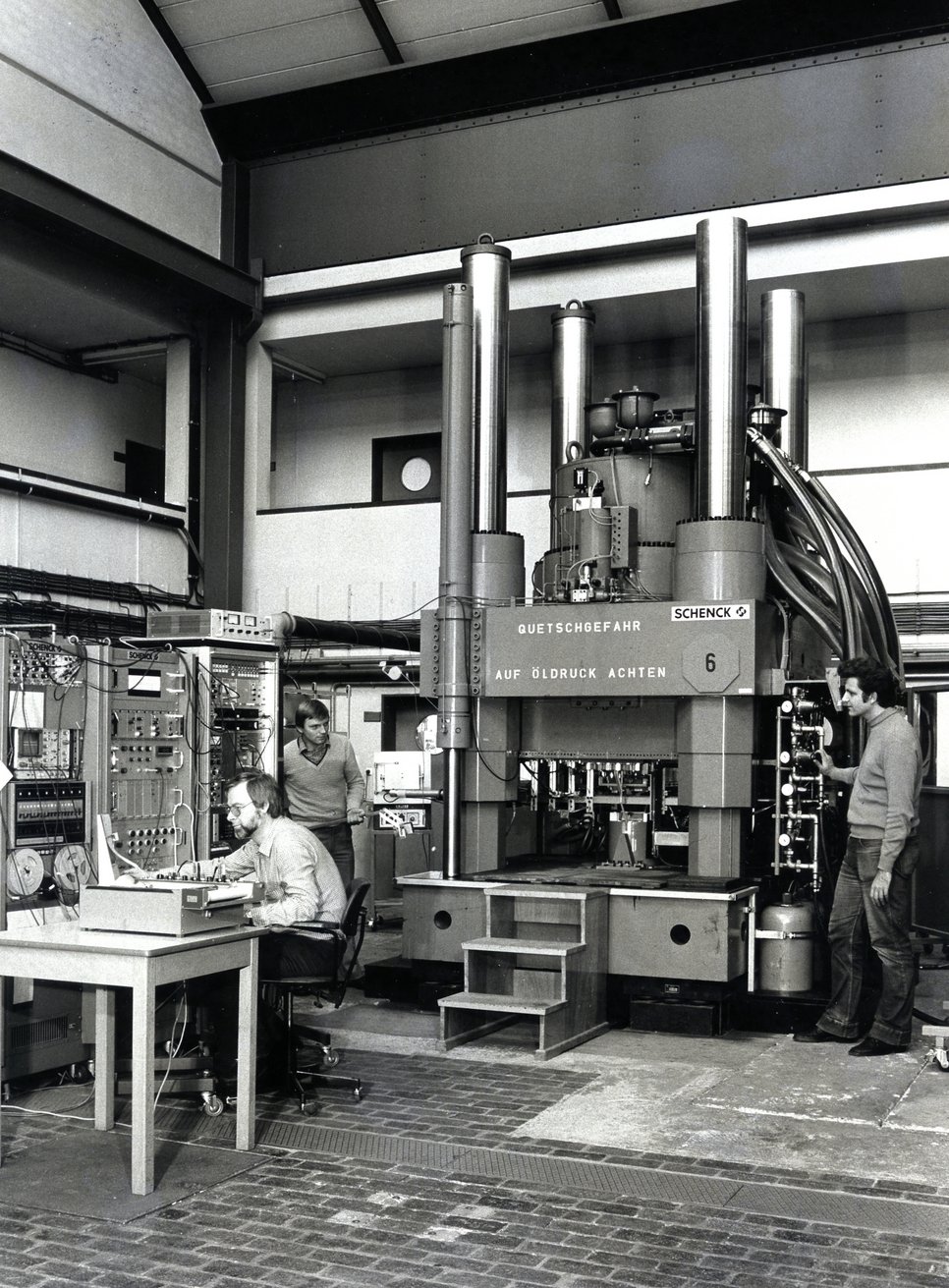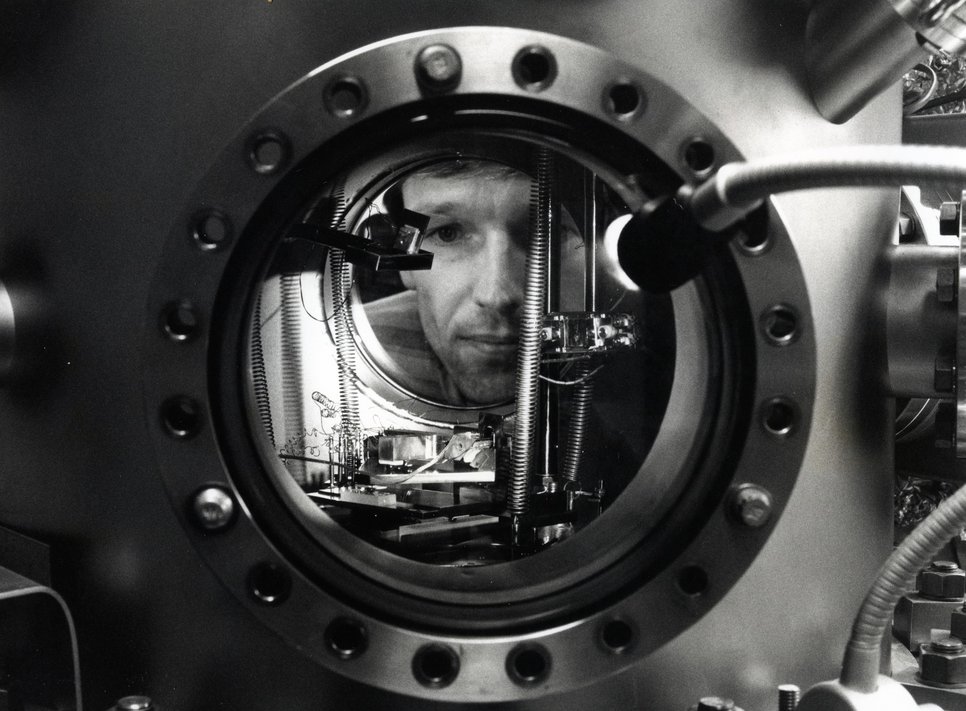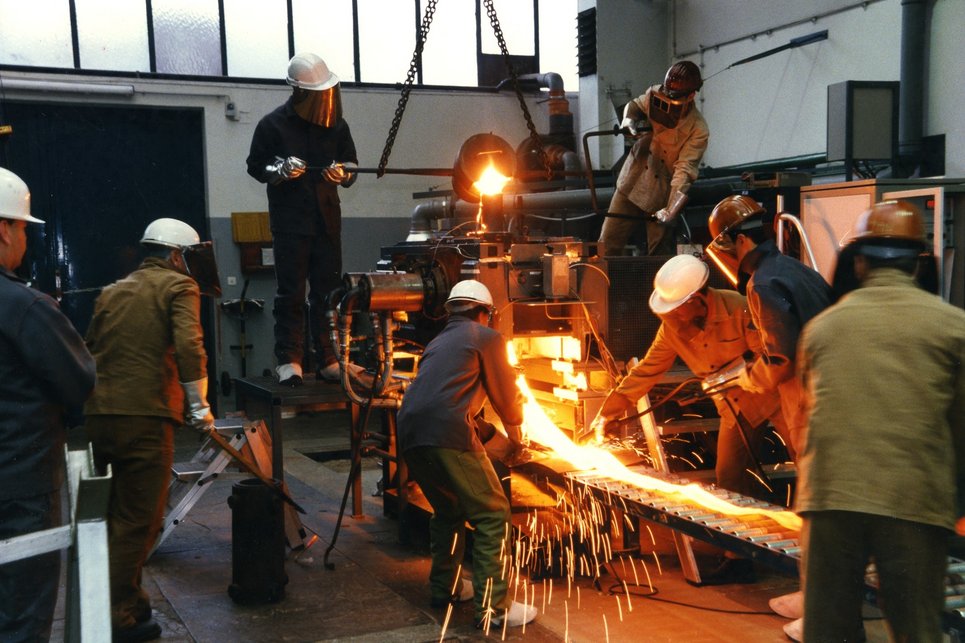
10: The Max-Planck-Institut für Eisenforschung and the impact of the steel crisis
„The German steel industry has been faced with new structural and therefore economic problems since 1975. The work of the institute has not been adversely affected by this development so far. On the contrary: With a heightened awareness of the causes there is obviously a clearer recognition of the contribution which research and development can make towards overcoming the structural problems within the steel industry.“ [1]

These optimistic words stood at the beginning of the annual report of the Max-Planck-Institut für Eisenforschung (MPIE) for the year 1978. The global steel crisis, which escalated since 1975, had actually led to the closure of numerous steel mills in Germany as well as to drastic job cuts. Initially, this did not have a negative impact neither on the work of the institute nor on its funding since the grants towards the MPIE budget coming from the Verein Deutscher Eisenhüttenleute (VDEh) and the Max-Planck-Gesellschaft (MPG) had remained more or less constant between 1976 and 1982.[2]

Beginning in 1984, however, the VDEh was forced to reduce its annual expenditure going to the MPIE because of the industry's significant losses in revenue.[3] On the other hand, the budget of the MPG had remained static since 1972, albeit with some fluctuations.[4] From now on, the institute became increasingly reliant on third-party funds for its financial stabilisation. In particular grants by the Federal Ministry of Research and Technology had risen since the beginning of the 1980s.[5]
The institute's precarious financial situation continued to the 1990s, leading to massive under-investment and, in addition, to a continuing decline in the number of employees. While the MPIE had a headcount of more than 257 in 1982, this number decreased to 192 in 1992 and went down further to only 107 in 1998.[6]

In 1988, the MPIE decided, „based on current topics of research, to initiate a gradual and progressive expansion of its fields of activity.“ In future it was going to increasingly include other materials besides iron and steel and expand its fields of work to materials and process technology as well as process models. This was welcomed by the advisory board as well as the VDEh and the MPG.[7] On 26th October, 1990 the position of the institute's director and chief-executive was taken over by Peter Neumann, head of the department of physical metallurgy. During the same year, the structure of the MPIE with its six departments of metallurgy, materials science, forming technology, applied metallurgy, physical metallurgy and physical chemistry, was changed.[8]
[1] Max-Planck-Institut für Eisenforschung GmbH Düsseldorf: Jahresbericht 1978, Düsseldorf, 1979, p. 1.
[2] Max-Planck-Institut für Eisenforschung GmbH Düsseldorf: Jahresbericht 1983, Düsseldorf, 1984, p. 1.
[3] Ibid.
[4] Flachowsky, Sören: Von der Wagenburg der Autarkie zu transnationaler Zusammenarbeit. Der Verein Deutscher Eisenhüttenleute und das KWI/MPI für Eisenforschung 1917-2009, in: Maier, Helmut; Zilt, Andreas; Rasch, Manfred (publ.): 150 Jahre Stahlinstitut VDEh 1860-2010, Essen, 2010, p. 704 f.
[5] MPIE: Jahresbericht 1983, p. 1.
[6] Flachowsky: Von der Wagenburg der Autarkie zu transnationaler Zusammenarbeit, p. 705 f.
[7] Max-Planck-Institut für Eisenforschung GmbH Düsseldorf: Jahresbericht 1988, Düsseldorf ,1989, p. 1.
[8] Max-Planck-Institut für Eisenforschung GmbH Düsseldorf: Jahresbericht 1990, Düsseldorf ,1991, p. 1 f.and 287.


